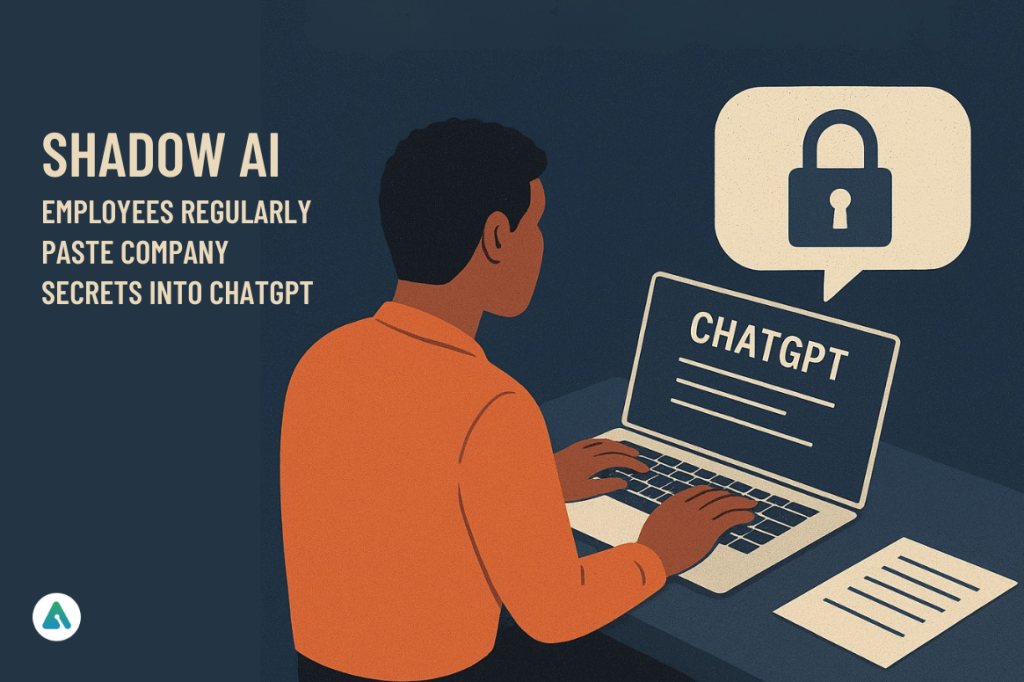Let’s be real: AI is everywhere. Employees lean on tools like ChatGPT to draft emails, summarize reports, or debug code in seconds. And yeah, it makes life easier. But here’s the kicker — sometimes, in the rush to get work done, sensitive company info slips out. Experts call this phenomenon Shadow AI, and it’s quietly growing faster than IT teams realize.
A recent study highlights the scale of the problem: 77% of employees admitted to pasting company information into ChatGPT or similar AI platforms. And it’s not just careless behavior — it’s a symptom of modern workflows relying heavily on AI and unmanaged accounts.
Data Slipping Through the Cracks
Here’s the hard truth: traditional file-based DLP measures don’t cut it anymore. According to enterprise telemetry from Fortune 500 companies:
- 82% of AI tool usage happens through personal or third-party logins outside corporate single sign-on (SSO).
- Critical controls like MFA, role-based access, and detailed audit logs are often bypassed.
- Employees are copying internal documents, client lists, and even financial records directly into AI prompts.
This isn’t about lazy employees. People are trying to finish tasks efficiently. But as the data shows, productivity hacks can backfire, leading to file-less leaks that evade traditional monitoring. For more insight on productivity risks, check out how AI sometimes destroys productivity in the workplace.
Innocent Prompts, Major Fallout
Picture this: an engineer pastes proprietary code into ChatGPT to debug a tricky problem, or a marketing manager inputs a confidential strategy deck for a quick summary. On the surface? Totally harmless.
But every prompt could expose trade secrets, customer data, or internal strategies. Once that data leaves the company’s control, it’s nearly impossible to retract. AI may cache, reuse, or even “learn” from the inputs. Teaching employees to think before they paste is critical — and tools like critical thinking exercises can help sharpen judgment.
Shadow AI: Not Your Old-School IT Problem
Shadow AI isn’t just another IT headache. It’s:
- Everywhere: Phones, laptops, tablets — you name it.
- Invisible: IT can’t see what’s pasted into AI prompts.
- Human-powered: Not malware, just humans trying to get work done.
- Permanent-ish: Once it’s out there, it’s basically gone forever.
Even corporate web apps aren’t safe. Up to 40% of logins at large enterprises use personal or unmanaged credentials, bypassing enterprise-grade authentication and monitoring. Combine that with chat apps — where 87% of traffic flows through unmanaged accounts and 62% contains sensitive info — and you’ve got a perfect storm. For maintaining staff efficiency without compromising safety, see balancing workplace happiness with productivity in AI-driven workflows.
How to Play It Smart
Banning AI outright? Forget it. Employees will find workarounds. The smarter approach is guidance + safe tools:
- Deploy enterprise-grade AI, like a private GPT environment or an internal large language model (LLM), keeping data in-house.
- Educate employees on dos and don’ts without instilling fear.
- Monitor intelligently with filters, behavioral analytics, and contextual policies.
- Build a culture of trust, so employees understand rules exist for protection, not punishment.
The goal: don’t fight AI — teach your team to dance with it safely.
People First, Tech Second
At its core, Shadow AI is a human problem. Employees want to look smart, finish tasks faster, and meet deadlines. AI is the perfect sidekick — until it isn’t. Human curiosity + productivity pressure + unregulated tools = mistakes waiting to happen.
Every prompt is a gamble. In today’s AI-powered office, where employees regularly paste company secrets into ChatGPT and other LLMs, those gambles can cost a lot. Protecting company data now depends as much on guiding people as protecting networks.
Visit: AIInsightsNews


